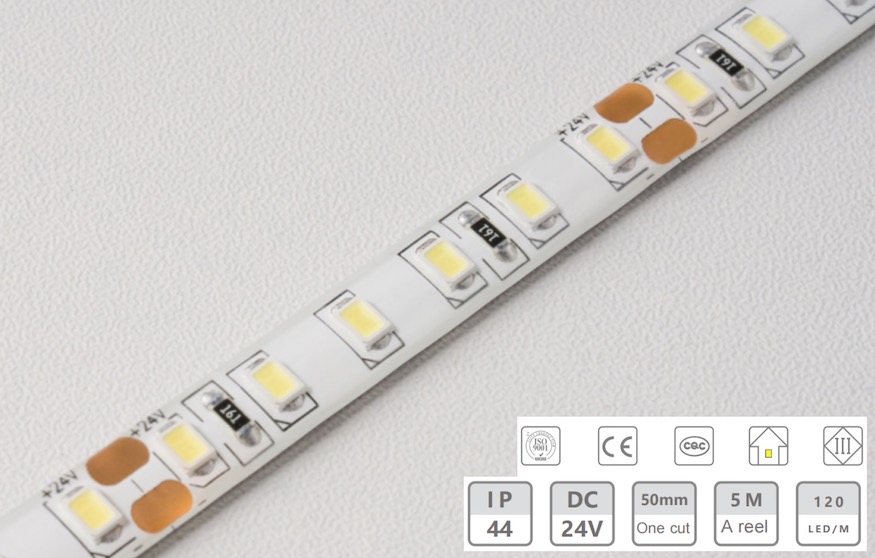Why Are Low-Voltage Light Strips Transforming Modern Lighting Solutions?
2025-10-14
Low-voltage light strips have emerged as a versatile and energy-efficient solution for both residential and commercial lighting projects. Designed to operate at safer, lower voltages than traditional lighting systems, these strips provide flexible installation, high customization potential, and reduced electricity consumption.
What Are the Key Technical Specifications of Low-Voltage Light Strips?
Low-voltage light strips are defined by their operating voltage, luminous efficacy, and material construction. Understanding these parameters ensures proper selection for specific applications, including indoor ambient lighting, outdoor signage, or architectural accent lighting.
Table: Technical Specifications of Typical Low-Voltage Light Strips
| Feature | Specification Range | Description |
|---|---|---|
| Operating Voltage | 12V / 24V DC | Low-voltage operation enhances safety and reduces power consumption. |
| LED Type | SMD 2835, SMD 3528, SMD 5050 | Determines brightness, efficiency, and color options. |
| Color Temperature | 2700K–6500K | Offers warm white, neutral white, and daylight options. |
| Luminous Flux | 300–1500 lumens per meter | Brightness varies by LED density and strip length. |
| Power Consumption | 4–20 W/m | Low wattage ensures energy savings. |
| IP Rating | IP20–IP68 | Protection against dust and water; suitable for indoor and outdoor use. |
| Flexibility & Cutability | Cut every 5–10 cm | Allows customization to fit irregular spaces. |
| Adhesive Backing | 3M tape / silicone | Enables easy mounting on multiple surfaces. |
| Dimmability | PWM or analog dimming | Compatible with dimmers for mood lighting control. |
These parameters demonstrate how low-voltage light strips combine energy efficiency, flexibility, and safety. Selection depends on project requirements, including ambient brightness, moisture resistance, and installation surface.
Why Should Low-Voltage Light Strips Be the First Choice for Modern Lighting Projects?
Low-voltage light strips offer multiple advantages over conventional lighting systems.
-
Energy Efficiency and Cost Savings: Operating at lower voltages significantly reduces electricity usage while maintaining high brightness levels. LED technology ensures minimal heat loss, extending the lifespan of the strips.
-
Safety and Ease of Installation: Low-voltage operation reduces electrical hazards, allowing safer DIY or professional installation. Flexible strip design and adhesive backing enable easy mounting on walls, ceilings, cabinets, and furniture.
-
Versatility in Design and Application: With customizable lengths, color temperatures, and brightness levels, these strips can highlight architectural features, create ambient lighting, or serve as task lighting in kitchens, offices, and retail spaces.
-
Durability and Longevity: High-quality low-voltage light strips are resistant to heat, moisture, and UV exposure. IP65–IP68 rated strips are suitable for outdoor installations, ensuring long-term performance without frequent replacements.
-
Integration with Smart Technology: Many modern low-voltage light strips can be integrated with smart home systems, enabling remote control, scheduling, and synchronization with other devices for dynamic lighting effects.
This combination of safety, adaptability, and efficiency positions low-voltage light strips as a preferred choice for designers, builders, and homeowners aiming to modernize lighting while reducing energy costs.
How Can Low-Voltage Light Strips Be Installed and Optimized for Maximum Performance?
Proper installation and optimization of low-voltage light strips are critical for achieving desired lighting effects and ensuring long-term reliability.
-
Planning and Layout: Determine the total length required, cut points, and desired brightness. Use a measuring tape to map the installation area and consider any obstacles or surfaces that may affect adhesion or heat dissipation.
-
Power Supply Selection: Choose a compatible low-voltage power supply with sufficient wattage to support the total length of the strip. Undersized power supplies can reduce brightness and reduce lifespan.
-
Surface Preparation and Mounting: Clean the mounting surface to remove dust, grease, or moisture. Peel off the adhesive backing and press the strip firmly. For uneven or outdoor surfaces, use clips or silicone channels for added security.
-
Wiring and Connectivity: Ensure proper polarity and secure connections. For long runs exceeding 5 meters, consider voltage drop and use parallel wiring or additional power injections to maintain uniform brightness.
-
Dimming and Control Integration: Use PWM dimmers or smart controllers to adjust brightness and color. Test the strip before final installation to ensure correct voltage and functionality.
-
Maintenance Tips: Regularly inspect strips for loose connections, dirt accumulation, or water ingress. High-quality low-voltage strips require minimal maintenance but perform best in clean, dry, and ventilated conditions.
By following these steps, low-voltage light strips can provide consistent illumination, safety, and aesthetic appeal for years.
Frequently Asked Questions About Low-Voltage Light Strips
Q1: Can low-voltage light strips be used outdoors?
A1: Yes, low-voltage strips with an IP65 or higher rating are suitable for outdoor use. IP65 provides water resistance against rain and splashes, while IP68 ensures submersion in water for specialized installations. Always check the product specifications to confirm the correct IP rating for the intended environment.
Q2: How long do low-voltage LED light strips last?
A2: High-quality LED strips typically last 30,000 to 50,000 hours under normal operating conditions. Factors affecting lifespan include voltage stability, heat management, and environmental exposure. Using a reliable low-voltage power supply and ensuring adequate ventilation can maximize longevity.
In conclusion, low-voltage light strips are an innovative solution that combines energy efficiency, safety, versatility, and smart integration capabilities. As modern lighting continues to evolve, these strips are redefining residential and commercial illumination by providing customizable and durable solutions for a variety of applications. Kons offers a wide range of high-quality low-voltage light strips designed to meet both professional and personal needs. For personalized guidance, product inquiries, or bulk orders, contact us to learn more about how Kons can illuminate your space efficiently and elegantly.



